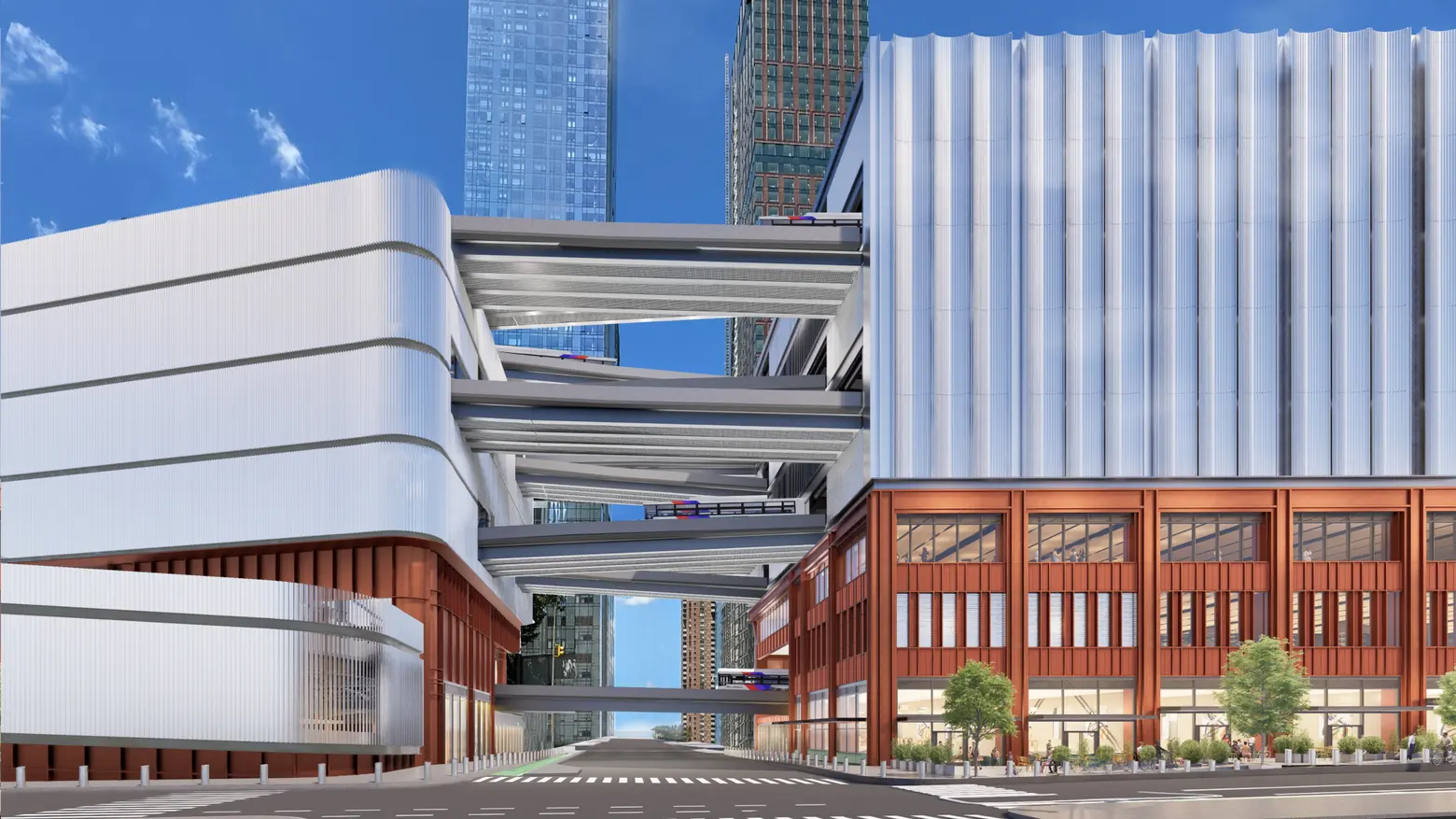
Rendering credit: Foster + Partners & Epstein
The Port Authority of New York and New Jersey secured a major loan from the federal government for its Midtown bus terminal replacement project this week, just days before President-elect Donald Trump takes office. The agency will receive $1.9 billion from the U.S. Department of Transportation to fund the first phase of the $10 billion project. The Port Authority has scrambled to get the necessary federal approvals before Trump’s inauguration, fearing he would halt the project.
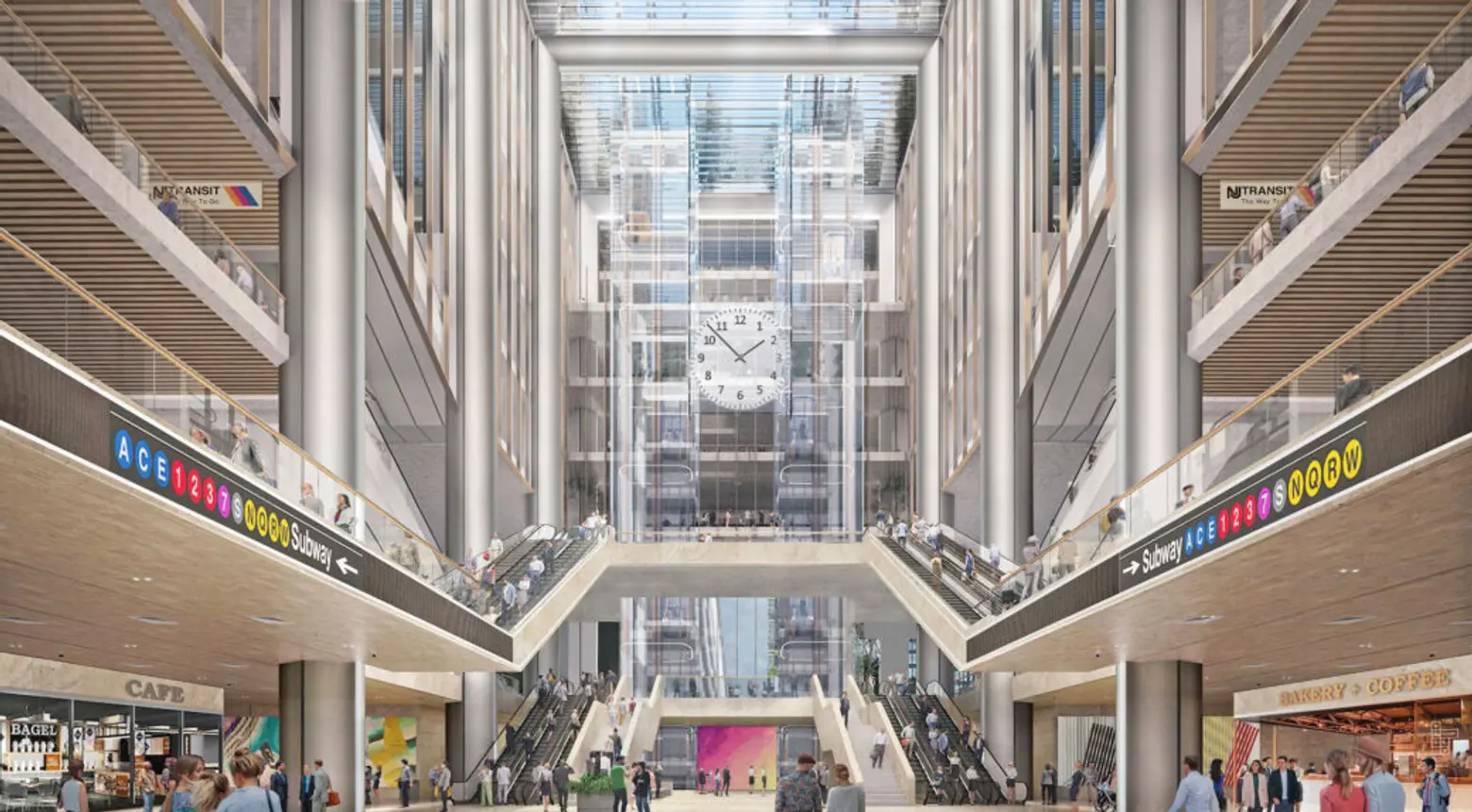
The loan, issued through the Build America Bureau, is a Transportation Infrastructure Finance and Innovation Act (TIFIA) loan—the first time the Port Authority has used this program in its 25-year history. In addition to the loan, financing for the first phase will include Port Authority capital funding.
Along with the $3 billion allocated in the Port Authority’s 10-year construction plan, the loan covers nearly half of the terminal’s estimated $10 billion price tag, according to Gothamist.
“This federal loan for this vital interstate transportation facility will enable the Port Authority to build a 21st century bus terminal that commuters from New Jersey and communities in New York City deserve and will rely on for decades to come,” Port Authority Chairman Kevin O’Toole said.
“I thank our federal partners for their support of a project that will generate economic benefits for our entire region while improving the quality of life for commuters and the community where the terminal is located.”
Plans to replace the terminal have been circulating since 2013 to account for the growth in ridership. Since then, nearly 30 separate proposals have been produced.
A major driver for the new terminal is anticipated growth in bus ridership. On an average weekday in 2019, the terminal saw approximately 260,000 passengers on 7,800 buses, making up roughly 23 percent of trips in and out of Manhattan’s core. However, officials estimate that this number could rise to 337,000 passengers daily by 2040, as reported by Crain’s.
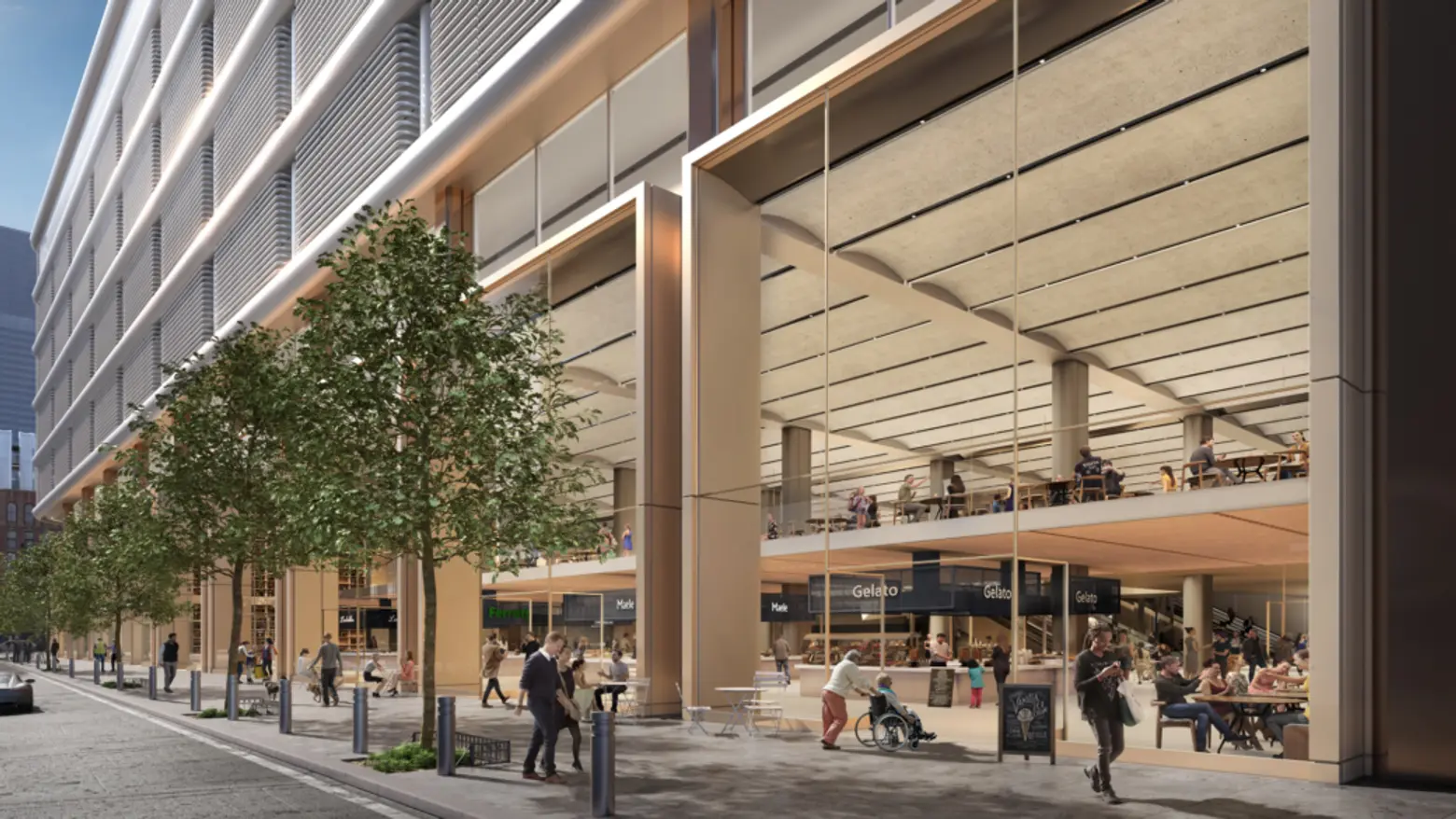
“For decades, one of the busiest bus terminals in the world deteriorated and needed major upgrades and modernization,” Assistant Secretary for Transportation Policy Christopher Coes said. “With over 250,000 daily passengers and even higher demand predicted, this project is crucial to the region and the health of our economy, creating 6,000 construction jobs in the process.”
Under the redesign, the facility will feature a new 2.1 million square foot main terminal, a separate storage and staging building, and new ramps leading directly in and out of the Lincoln Tunnel, significantly improving capacity, bus speed, and congestion on adjacent streets.
The project will also permanently close a portion of 41st Street between Eighth and Ninth Avenues and includes a central main entrance, additional street-facing retail, and a large multi-story atrium.
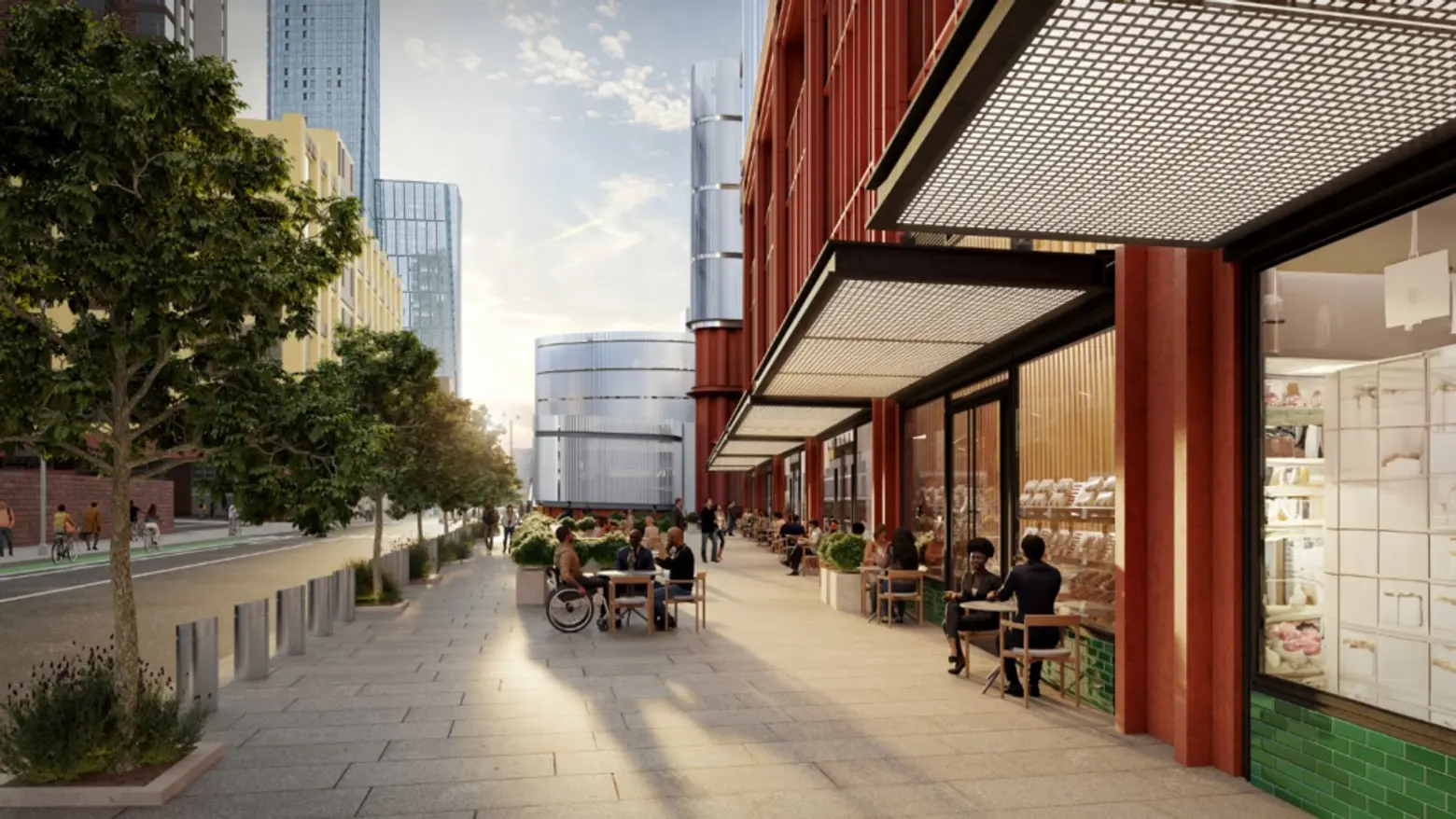
The new storage space, slated for construction to the west of the terminal on 40th Street between Ninth and 10th Avenues, will enable buses to idle before heading to gates to pick up riders. Currently, buses are forced to sit and wait, causing traffic on nearby streets.
Additionally, existing traffic lanes on Dyer Avenue will be covered by roughly 3.5 acres of public green space. A winding ramp connecting the Lincoln Tunnel will make up the western portion of the project, stretching the existing footprint of the site along 40th Street to 10th and 11th Avenues.
The facility will be built with the future in mind, designed to achieve net-zero emissions, accommodate all-electric bus fleets, and utilize modern technology throughout.
The building will also include sustainability and resiliency measures, including LEED certification and clean construction, onsite renewable energy, zoned heating and cooling systems, and heat recovery and reuse technology.
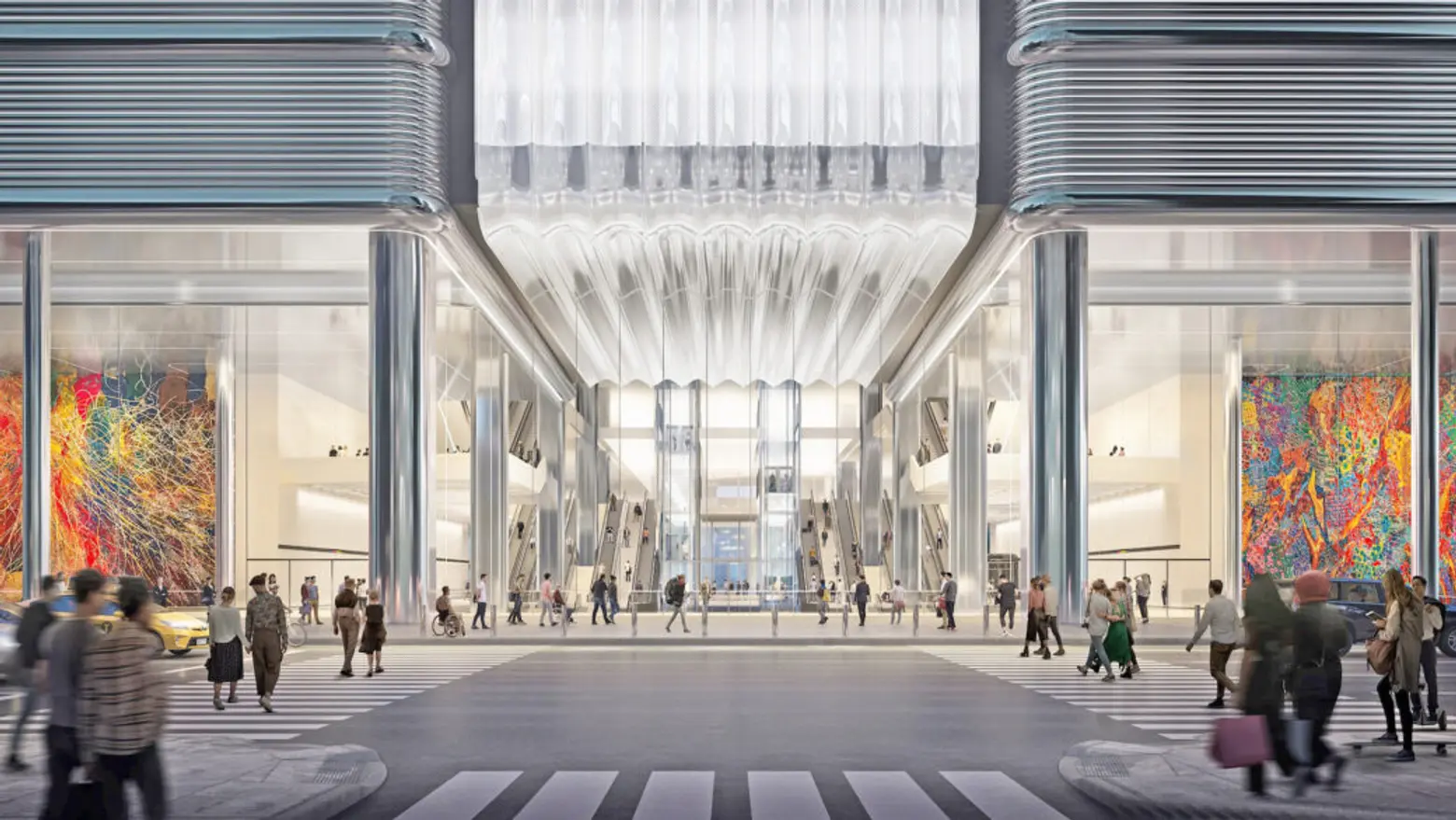
The new park, ramps, and storage space could be completed by 2028, while the main terminal building is slated for completion in 2032.
The project will also fund its redevelopment through two commercial skyscrapers that will be built along Eighth Avenue, on the corner of 40th and 42nd Streets. A third office tower, to be built on land bounded by West 30th and West 31st Streets and Ninth and 10th Avenues, would also support the project.
PANYNJ and Mayor Eric Adams agreed in March to an arrangement that contributes up to $2 billion in property tax revenue from the commercial towers to help fund the terminal’s redevelopment, according to Crain’s.
In August 2022, the Port Authority selected the architecture firm Foster + Partners and the engineering and design team Epstein to design the new facility and renderings of the project’s current design were released earlier this year.
In September, PANYNJ and the FTA signed the final environmental impact statement for the terminal’s redevelopment. The signing, a major step towards a federal record of decision on the project, followed a final round of public hearings that produced more than 700 public comments.
The City Planning Commission in October voted unanimously to approve the bus terminal’s revamp. In November, the project was approved by the City Council.
RELATED:








Recent Comments